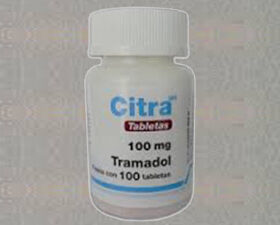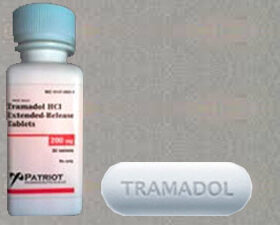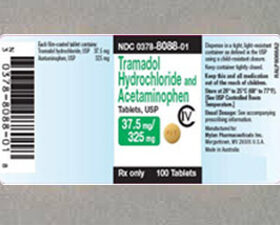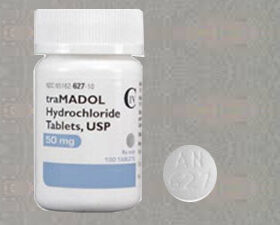- Your cart is empty
- Continue Shopping

Shop
Buy Tramadol Online
You can easily Buy Tramadol Online Overnight and get it delivered to your home quickly via FedEx with the help of Anxietymedsusa.com.
Introduction to Tramadol
Tramadol is a prescription opioid pain medication that was first synthesized in 1962 by the German pharmaceutical company Grünenthal. It was initially marketed in 1977 under the brand name Tramal for the treatment of moderate to moderately severe pain.
Tramadol is considered an atypical opioid because it not only binds to the opioid receptors in the brain and spinal cord like other opioid medications but also inhibits the reuptake of serotonin and norepinephrine. This dual mechanism of action provides analgesic and anti-inflammatory properties that make tramadol effective for treating both acute and chronic pain.
Medical Uses of Tramadol
Tramadol is mainly prescribed for relieving moderate to severe pain. It is most often prescribed for acute pain following surgery or injury as well as chronic conditions like osteoarthritis, rheumatoid arthritis, fibromyalgia, and cancer pain.
Tramadol works by modifying the body’s response to pain. It attaches to opioid receptors located in the brain and spinal cord, which blocks the transmission of pain signals. This provides pain relief similar to other opioid medications like morphine or oxycodone, but tramadol is considered weaker.
For acute pain, tramadol is often prescribed for short-term use following things like:
- Orthopedic surgeries
- Dental procedures
- Injury or trauma
For chronic pain conditions, doctors may prescribe tramadol on an ongoing basis to help manage daily symptoms associated with:
- Osteoarthritis – degeneration of joint cartilage causing joint pain and stiffness
- Rheumatoid arthritis – an autoimmune disorder causing joint inflammation
- Fibromyalgia – a condition causing widespread muscle pain and tenderness
- Cancer pain – pain associated with tumors or cancer treatment
Dosage Information
Tramadol comes in both immediate-release and extended-release formulations.
The immediate-release tablets are available in doses of 50 mg and 100 mg. The recommended dosage is 50-100 mg every 4-6 hours as needed for pain relief.
The extended-release tablets and capsules come in doses ranging from 100 mg to 300 mg. These are taken once daily and provide around-the-clock pain relief. Common extended-release doses include:
- 100 mg once daily
- 200 mg once daily
- 300 mg once daily
For chronic pain, doctors often start patients at a low dose of tramadol and gradually increase the dose based on the patient’s response and tolerance. The maximum recommended daily dose is 400 mg per day.
Side Effects of Tramadol
Tramadol can cause a range of side effects ranging from mild to severe. Here are some of the most frequent side effects:
- Drowsiness
- Dizziness
- Constipation
- Nausea
- Vomiting
- Sweating
- Dry mouth
These mild side effects often improve over time as the body adjusts to tramadol. Nevertheless, certain side effects could be more severe and necessitate medical attention.
Seizures – Tramadol can increase seizure risk in some people, especially at higher doses. Seizures are more likely if tramadol is combined with other drugs that lower the seizure threshold like antidepressants.
Breathing problems – Tramadol can slow or depress respiratory function, especially when taken with alcohol or other substances. Difficulty breathing is a medical emergency.
Warnings Associated With Tramadol
Tramadol does carry some serious warnings that should be considered before taking this medication.
Dependence and Abuse – Tramadol can be habit-forming, even at regular doses. It has an addiction potential similar to opioid painkillers. People who suddenly stop taking tramadol after prolonged use may experience withdrawal symptoms.
Serotonin Syndrome – Tramadol can cause a rare but potentially fatal condition called serotonin syndrome. It happens when too much serotonin builds up in the brain. Symptoms may consist of elevated body temperature, seizures, irregular heart rhythm, and loss of consciousness. Serotonin syndrome is more likely if tramadol is taken with certain antidepressants or migraine medications.
Seizures – Seizures have been reported in people taking tramadol within the recommended dosage range. The risk may be increased if tramadol is taken with other drugs that lower the seizure threshold, like SSRIs, TCAs, and opioids.
Withdrawal Symptoms of Tramadol
Withdrawal from tramadol can occur when a person who is physically dependent on the drug suddenly stops or greatly reduces their consumption. Among the typical symptoms of tramadol withdrawal are:
- Anxiety
- Sweating
- Goosebumps
- Muscle aches and pains
- Insomnia
- Agitation
- Runny nose
- Nausea
- Diarrhea
- Yawning
- Weakness
Tramadol withdrawal symptoms tend to resemble opioid withdrawal but may be less severe. Symptoms often begin within 12-24 hours after the last dose of tramadol. The acute phase of withdrawal typically lasts between 3-10 days. Some symptoms like anxiety, depression, and sleep disturbances may persist for longer.
Alternatives for Pain
Tramadol is most commonly prescribed for moderate to moderately severe pain relief. However, there are alternatives for managing pain that do not involve Tramadol or other opioids.
Non-Medication Options
Several non-medication therapies may provide pain relief, either alone or in conjunction with other treatments:
Physical therapy can assist in muscle strengthening, enhancing mobility, and alleviating pain. PT involves stretching, strength training, massage, and other techniques.
Exercise – Activities like walking, swimming, or biking can help reduce pain by building strength, flexibility, and endurance. Light activity may be better tolerated than vigorous exercise for some pain conditions.
Stress reduction – Techniques like meditation, yoga, tai chi, deep breathing, or progressive muscle relaxation can help relieve stress and tension, which may exacerbate pain.
Medication Alternatives
Several types of oral medications may be effective for certain kinds of pain:
NSAIDs – Non-steroidal anti-inflammatory drugs like ibuprofen help reduce inflammation and pain. They carry risks like stomach bleeding or kidney damage with long-term use.
Acetaminophen – Less risky than NSAIDs for stomach issues, but not an anti-inflammatory. May be an option for mild acute pain or arthritis.
Antidepressants – Some tricyclic antidepressants and SNRIs may be effective for nerve-related pain like fibromyalgia.
Anti-seizure drugs – Medications like gabapentin help calm overactive pain nerves and may relieve neuropathic pain.




